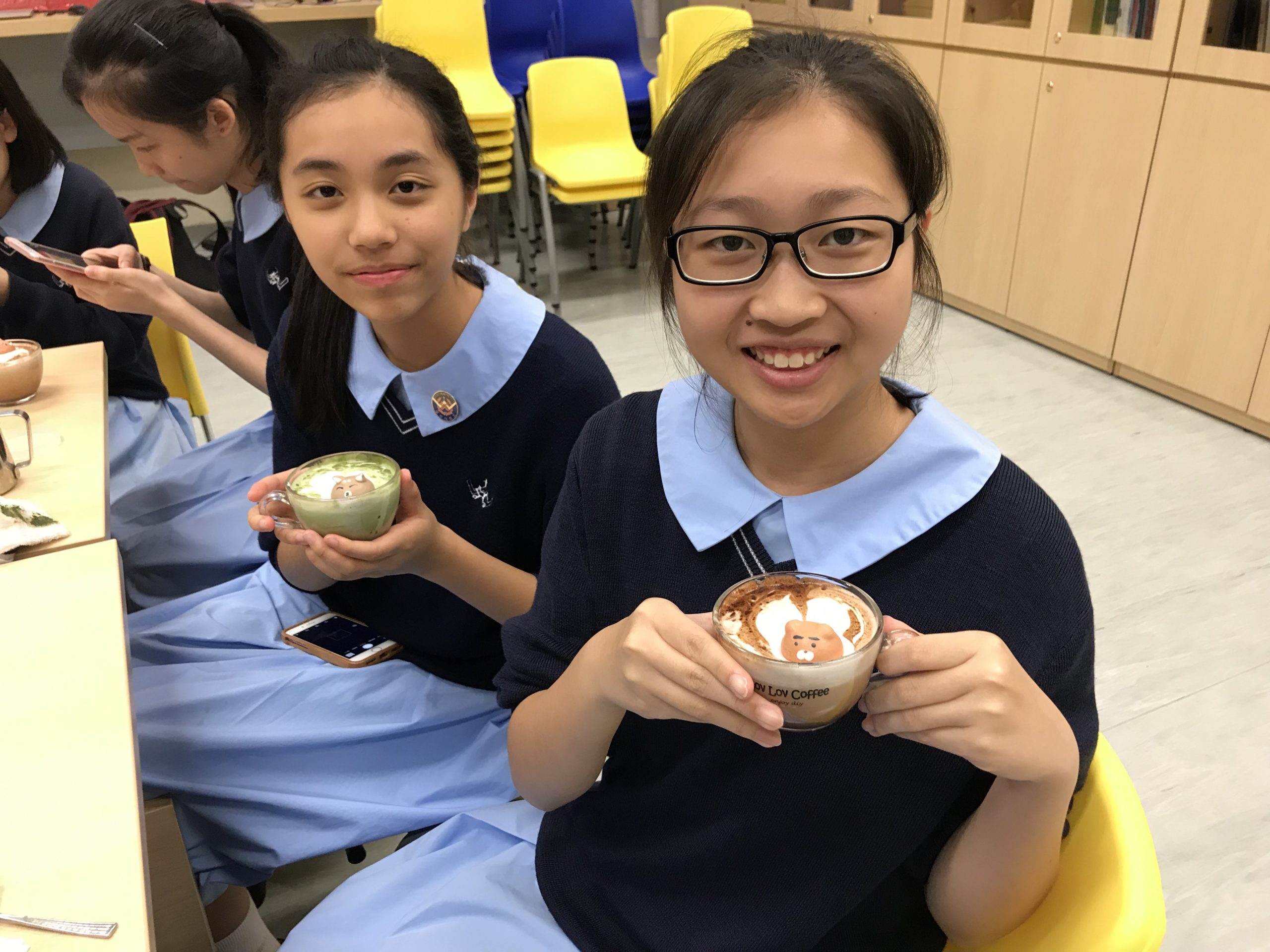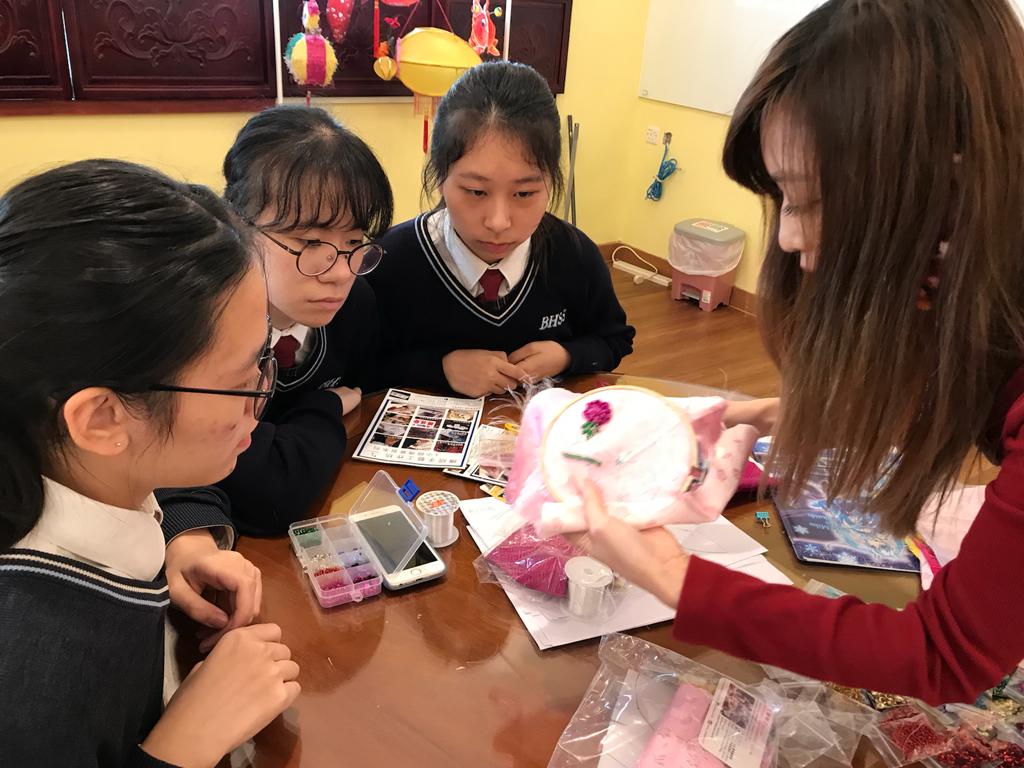Benchmark 3
Learning from Multiple Pathways Information

1. What good looks like?
Students should have access to the latest information about multiple pathways to inform their career and life decisions and act accordingly. Students actively and confidently connect, select and make best use of latest information of multiple pathways1, through reflection, according to their own needs, interests and abilities to make choice and act on their decision.
- Good quality information2 about multiple pathways should be in full range of opportunities including all academic, informal, and VPET3 pathways with a full spectrum from study, leisure and career options of both paid and unpaid work.
- The school provides training for students to learn how to find and process the up-to-date information about multiple pathways to make informed choices for their future development.
- The school makes the up-to-date information about multiple pathways highly visible and attractive which include a mix of printed materials and online resources to help students understand the full range of different pathways.
- By Secondary 6, more than 90%4 of students identify at least three possible pathways to pursue after graduation. They are confidently seeking multiple pathways information to inform their decisions about further learning and/ or work.
2. Why this matters?
- Access to a wide range of multiple pathways information helps to motivate students to be aware of the diversity of future options to plan their future and reflect upon their study progress and actions taken in pursuing chosen pathways. Curriculum Development Council, Education Bureau (2019) noted that students should be conveyed to understand the up-todate information on multiple pathways and study options, which is important to facilitate students to have plans for their future.
- Provide the latest and diverse information including details about the labour market to meet the needs of students can encourage students to think about possible personal development directions to match their individual characteristics and strengths with the possible pathways. In this connection, students can understand how to seek and analyze sources of multiple pathway information to consider different options and make informed decisions to encounter school-to-work transition.
- Improve school’s circulation of multiple pathways information can help promote students’ exposure to up-to-date information and motivate students to ask teachers for advice, and help build an information-rich environment.
- Teachers need to be updated about new and developing pathways, such as different work approaches, new careers, apprenticeship, serious leisure activities and different online platforms for CV creation, which help students to make good use of the information for pathway exploration.
3. Top tips for schools*
PLAN
- Develop a systematic and holistic programme plan to present multiple pathways information to students. Start early from Key Stage 3 to enhance students’ motivation (e.g. involving whole-school parties including different subject panels and different committees, class teachers) to explore diversified information on multiple pathways and build a more in-depth understanding of different career options they are interested in.
- Boost students’ motivation through different means in the career and life development (CLD) plan (e.g., curriculum development, personal guidance and other learning experiences), to equip with students with up-to-date information.
- Make sure to disseminate information of a variety of pathways through the chosen communication channels with students and parents (e.g., website, e-platform, school’s notice boards, CLD resource centre) and learning activities (e.g., talks, sharing sessions, CLD periods).
- Equip teachers with up-to-date information on multiple pathways information, through communicating or arranging meetings with external stakeholders (e.g., representatives from higher education institutions, staff members from employment resource centres, and enterprise advisors) to collect the latest information on different pathways.

IMPLEMENT
- From Key Stage 3, make the up-to-date multiple pathways information highly visible and attractive, including a mix of printed materials (e.g. related info posters, booklets, notice boards) and online resources (e.g. relevant websites, create a google site for S.3 and S.6 students to provide up-to-date information respectively) to help students and parents understand the full range of different pathways.
- Start from key stage 3, foster students to analyze and use up-to-date information to make decisions by considering their values, attitude, skills, knowledge, strengths and interests.
- Sustain long-term and effective network with different stakeholders, including higher education advisors, enterprise advisors and serious leisure devotees (e.g. organising networking gathering and other means) to co-create with stakeholders in the programme design, listen to their feedback and use their feedback to update practices. May invite students to gain experiential experiences on the multiple pathways.
EVALUATE
- Involve students to give feedback about the applicability and impact of multiple pathways information offered by the school.
- Listen to what students say about multiple pathway information to and support ongoing updates of information and CLD messages delivered to students (e.g. for updating multiple pathways information, conducting personal guidance).
- Share collected student feedback to relevant teachers with different functions (e.g., Panel Heads, ECA coordinator) to review their plans and programmes.
- Ensure students can identify at least three pathway possibilities after graduation to help them understand potential options they can pursue and factors they should consider, and identify gaps between students’ choices and the information or advice provided by the school.
4. Working with partners
-
Higher and Tertiary Institution: Regularly review information about new courses and requirements, and make sure students understand a range of different subjects.
-
Vocational and Professional Education and Training (VPET) Institutions: Contact higher education institutions that provide VPET training to seek collaboration to arrange meaningful visits and exchanges with an aim to enrich the variety of students’ pathway options.
-
Alumni: Connect alumni to formulate a potential contact list, and make use of the list to arrange sharing sessions and events to feature information related to different pathways.
-
Serious Leisure Devotees: Keep good contact with people who devote themselves in serious leisure activities, and invite them to share personal career experiences that can enrich students’ understanding of different career developmental pathways.
-
Employers: Contact potential business partners to gather their up-to-date labour market information, disseminate relevant information to students, and connect relevant details to the CLD curriculum or CLD-infused subject curriculum. Work with potential business partners to arrange talks or presentations to introduce the information.
- Parents: Provide up-to-date multiple pathways information to parents in earlier stage of secondary studies e.g. Senior Form Electives selection Briefing session of F.3 students.

5. Insights gained from the pilot schools
- A pilot school puts strong emphasis on providing students with multiple pathways information and schedules a school day for a whole-school event called “Pathfinder @ CLAP”. The career team leads the planning and execution in collaboration with other functional teams to organize 30 different thematic talks or workshops on future studies and career pathways. Class teachers also make good use of the multiple pathways information from this event to conduct follow-up individual or group guidance sessions with students.
- Providing up-to-date multiple pathways information to functional team teachers based on their needs and specialties rather than overloading them with all different pathways information.
- Identify different multiple pathways information based on the school needs, as different schools have their own set of multiple pathways information to meet the needs of their students.
Reference:
Curriculum Development Council, Education Bureau (2019). Career and life planning – multiple pathways for all students to excel. Retrieved
from https://www.edb.gov.hk/attachment/en/curriculum-development/renewal/Guides/SECG%20Booklet%209_en_20190829.pdf
Education Bureau (2020). Multiple Pathways.
Retrieved from:
https://334.edb.hkedcity.net/new/en/multiplepathway.php
Relevant information on the website of The Hong Kong Association of Careers Masters and Guidance Masters (HKACMGM). Retrieved from:
https://www.hkacmgm.org/category/information/
https://www.hkacmgm.org/publication/article/2020/02/12/%e7%99%bc%e6%8e%98%e9%96%80%e8%b7%af-%e9%81%94%e6%88%90%e5%a4%a2%e6%83%b3/
Notes:
1 Multiple pathways refer to the diverse options available for the youth to pursue including but not limited to academic pathways, career
pathways, leisure life, and extended notion of work (ENOW) experiences.
2 Good quality information – means that the information provided must be complete, fair, accurate, easy to understand and up-to-date. It
might challenge stereotypes and biases, or offer insights into the future career trends.
3 VPET – Vocational and Professional Education and Training: More information on VPET is available at the latest Review Report:
Task Force on Promotion of Vocational and Professional Education and Training (2020). Task Force on Promotion of Vocational and
Professional Education and Training Review Report.
Retrieved from:
https://www.edb.gov.hk/attachment/en/edu-system/other-edu-training/vocational-other-edu-program/VPET_TF_Report_2019_e.pdf
4 In terms of school self-improvement process, schools are encouraged to set their own interim target (%) if appropriate and predict the
timeframe to achieve the BM standards.
